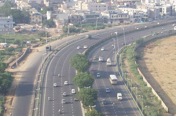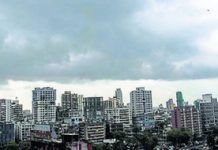An accident or a broken-down vehicle can block traffic on the high-speed Delhi-Gurgaon expressway into a tizzy as the ambitious project lacks the desirable infrastructure for emergency response. Security cameras are only limited to the toll plazas and the rest of the stretch is not under any kind of electronic surveillance. In the absence of cameras at regular intervals on the expressway, news of an accident or a stranded vehicle often takes a long time to reach the operator and by the time a response team is sent to the spot, there is already a traffic pile-up. Experts believe that if the entire stretch was under camera surveillance — as is the case with the Yamuna expressway — dealing with emergency situations would be easier and more effective.
Even the emergency response set-up — three jeeps, 12 motorcycles, three recovery cranes, one hydra crane and debris removing equipment — that toll operator Delhi-Gurgaon Super Connectivity Limited (DGSCL) claims to have deployed as part of the expressway patrolling team falls short of the requirement considering that five lakh vehicles use the thoroughfare every day.
A DGSCL spokesperson claimed that its emergency control room, through toll-free numbers, gets around 130 distress calls from expressway commuters every day. However, quick and effective response is a different matter altogether. Regular traffic congestions and accidents caused by stranded vehicles underline the limitations of the project plan in dealing with emergency situations.
The operator acknowledges the need for camera surveillance on the expressway but says that installing CCTV cameras on the entire 27.7-kilometre-long road is a lengthy and costly process. “We have deployed 150 camera systems at the toll plazas.”Putting cameras on the entire stretch was not part of the contract we signed with the National Highways Authority of India. However, we are in the process of installing about 100 cameras at several points on the expressway stretch over a period of one year,” said a DGSCL spokesperson.








